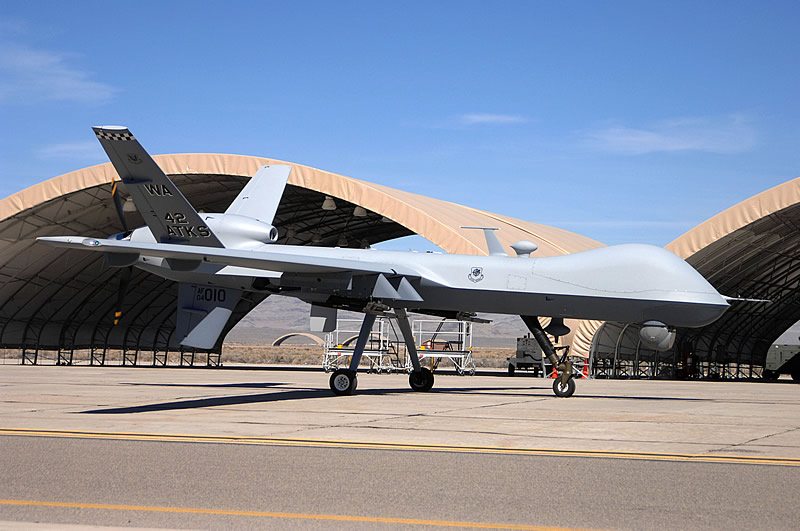The RAF’s Remotely Piloted Air System, the Predator MQ-9 Reaper, has notched up a landmark 20,000 operational flying hours over Afghanistan.
Reaper force has repeatedly proven itself, both in combat and as eyes in the skies for front line troops and military commanders on the ground.
Reflecting on the achievement, Air Officer Commanding No 2 Group, Air Vice-Marshal Phil Osborn, said:
“The RAF’s Reaper force has proven itself time and again in combat and is an essential element of the RAF’s combat intelligence, surveillance, target acquisition and reconnaissance capability.
“The real-time, day and night video coverage of the battle space, combined with the extensive use of onboard radar, provides a unique, cost effective and sustained capability that enhances the safety of troops on the ground.
“This cutting-edge remotely-piloted aircraft provides an impressive range of capabilities that are saving lives and making a real difference to the troops in Afghanistan.
“The aircraft is only as good as the individuals operating it though and I am most grateful for and must praise the dedication and operational focus of all the members of 39 Squadron, who are drawn from across all three Services, in achieving this milestone.”
A Reaper pilot from 39 Squadron spoke of his experiences after a recent tour in Afghanistan:
“When you’re assisting troops on the ground and insurgents are trying to take shots at them we can be called to use the Reaper’s precision weapons. As with fast jets, you’re still speaking to the troops on the ground and feel immersed in the operational environment.
“In many ways, you actually feel better connected to the situation on the ground than you do in a fast jet – the detailed computer systems that we’ve got with Reaper make it easier to get better intelligence pictures.”
Reaper was introduced in October 2007, and, with its array of high tech sensors and precision-guided weapons, it can carry out a wide range of missions to support forces in Afghanistan. It can gather pre-raid intelligence on target compounds, assist in countering IEDs (improvised explosive devices) and provide surveillance for routine patrols and supply convoys.
Reaper can use its sensors day and night to spy on insurgent activity for hours at a time and at a range where it is undetected from the ground. The images are complemented by radar, mounted in the nose of the aircraft, gathering another dimension of detailed imagery that is analysed by a team of highly trained intelligence specialists in military bases around the world.
If necessary, Reaper can also strike at insurgents with a range of precision-guided weapons.










